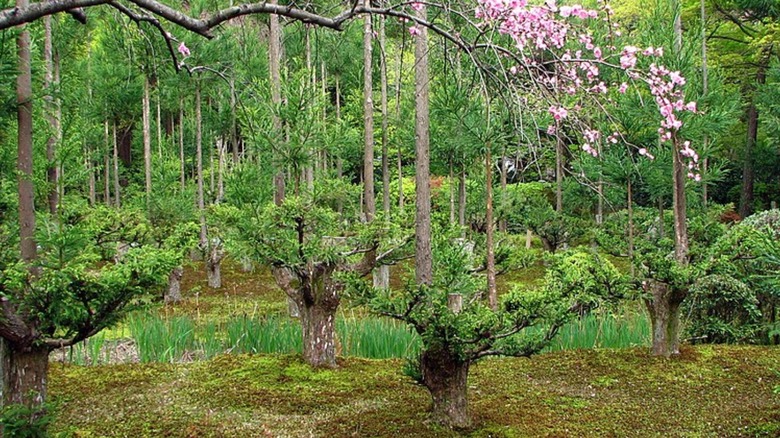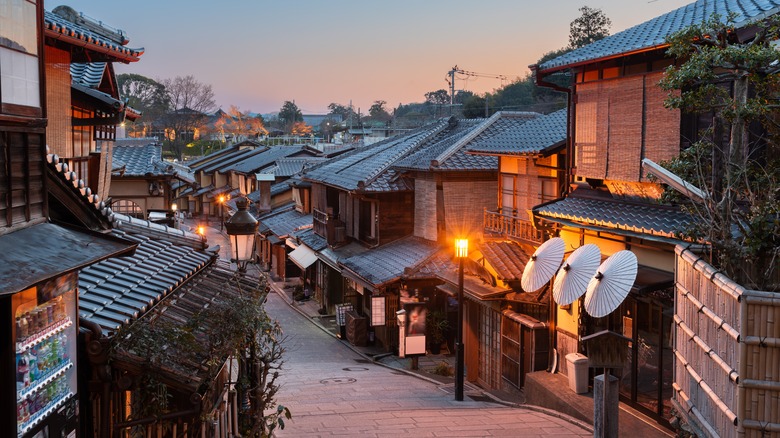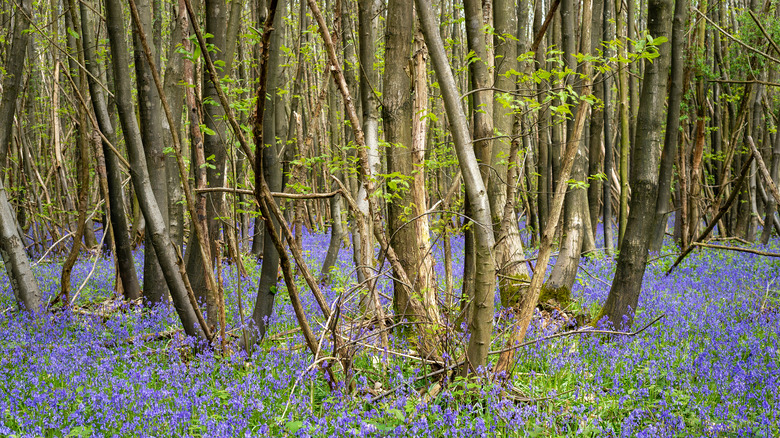Japan's Unique Tree Growing Technique That Could Help Solve The Climate Crisis
As wildfires rage and icecaps melt, concerns that the planet's temperature is spinning wildly out of control continue to grow. Replanting the world's shrinking forests is one possible solution to the crisis — and MIT estimates that our combined reforestation efforts could seal away 70 billion tons of carbon over the next 30 years. But how realistic is this optimistic vision? There is no way around the fact that globally we use an enormous amount of timber — and many environmentalists and even the U.N. recommend investing in products made from wood as an environmentally friendly alternative to plastic (via Reuters).
But never fear — there are solutions available. An ancient forestry technique from Japan may allow us to have our trees and make furniture out of them too: Daisugi a tree-pruning method that can produce lumber without the need to fell trees.
Daisugi trees — or platform cedars (via Timberbiz) — are manicured in such a way that the main body of the tree is left intact, while neat straight boughs are grown and harvested from the top of the trunk (via My Modern MET). The eye-catching result produces trees with mini-forests on top, providing harvestable lumber roughly after 20 years of growth. While the practice has been used in Japan for centuries, the technique has recently captured media attention worldwide as a possible solution to deforestation.
A new-old solution
Today, Japan in general is well-known for its funky-looking trees. At some unknown date, the art of bonsai was imported to Japan from China, and as a result, Japanese gardeners grew to become master tree manipulators (via the Bonsai Resource Center). The fascinating Daisugi technique was invented sometime in the 1400s using similar methods, supposedly created by an enterprising master of tea ceremonies. Apparently inspired by a lack of suitable land and a timber shortage, Daisugi has been used ever since (via My Modern MET).
Today, Daisugi trees are most commonly found in and around the Kyoto area, where the practice was invented. Because the timber these trees produce is both strong and easy to work with (via Open Culture), cedar has been used extensively in Japanese architecture for hundreds of years. The Kitayama cedar forests in the Northern Mountains have long furnished Kyoto with the necessary materials for the city's magnificent wooden teahouses — which look today just as they did in centuries past (via Open Kyoto).
A coppicing comeback
Although Daisugi has recently attracted a lot of buzz online, the technique is not news to western forestry professionals. While they look less dramatic, coppicing and pollarding are two different European versions of the same practice that date back to the ancient world (via My Modern MET). Coppicing involves cutting the tree at the base while pollarding is similar to Daisugi and involves trimming branches higher up the tree (via the WWT).
Pollarding was once particularly common in the U.K., where the excess limbs were used to supply firewood (via Rural History, 2003). Today the National Trust which protects British woodlands has resumed the practice of coppicing to maintain its forests (via the National Trust).
The climate change fighting benefits of these ancient traditions have been duly noted and in some places coppicing appears to be making a comeback in Europe. In 2018, Reforesting Scotland began promoting coppicing in order to reforest Scotland's sometimes barren windswept landscapes. Similarly, in Austria, the management of sustainable coppice forests has recently been heavily praised for protecting wildlife and fighting climate change (via Forest Ecology and Management, 2021).


